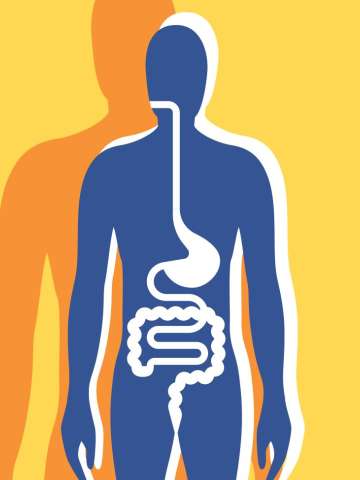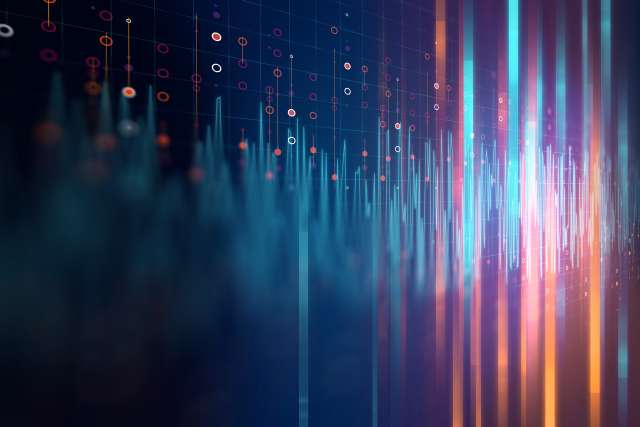GI Motility
Our skilled experts use the latest technologies and treatments to optimize patient care.

Why choose UCLA Health for gastrointestinal (GI) motility care?
GI motility is the muscle movement of the digestive system. It moves what you eat along the GI tract. Abnormal GI motility can affect the esophagus, stomach, small intestine, colon or anus. It can lead to symptoms that include difficulty swallowing, the sensation of food sticking in the chest or throat, chest pain, heartburn, nausea, vomiting, bloating, cramping, abdominal pain, constipation and diarrhea. Highlights of our program include:
Dedicated team of motility experts: The program brings together experts in the scientific, clinical, psychological and nutritional aspects of motility disorders. We take a team approach to optimize and individualize the care of each patient.
Collaborative care for progressive diseases: We partner with specialists in rheumatology and pulmonary medicine to treat people with scleroderma (a connective tissue disorder). We also collaborate with surgeons, speech language pathologists and otolaryngologists to treat swallowing disorders (dysphagia).
Integrative digestive health and wellness: In addition to the gastroenterologist who manages your care, other team members include GI dietitians with special expertise in digestive health and a GI nurse practitioner with expertise in the brain-gut axis and mind-body approaches. You also receive care from a GI health psychologist who specializes in the use of proven psychological strategies to reduce symptoms.
Latest technology: We use the latest technology, tools and therapies to properly diagnose and treat patients. Our experts are at the forefront of leading-edge treatments that improve GI health.
Our areas of care
As leaders in GI motility, we deliver accurate diagnoses and comprehensive treatments. Our services include:
Comprehensive evaluations
Our specialists diagnose GI motility disorders by gathering a thorough medical history and physical examination. As part of the evaluation, your physician may order additional testing. Our comprehensive assessments enable us to deliver the most effective therapies for you.
Advanced diagnostic testing
We use the latest technology to diagnose GI motility disorders. Our diagnostic testing includes:
Manometry: High-resolution manometry uses a thin, flexible catheter with pressure sensors to evaluate how well the esophagus or anal sphincter muscles work.
Upper endoscopy: We look at your esophagus, stomach and upper part of the small intestine using a long, flexible tube with a light and camera at the end.
Wire-based esophageal pH testing: This test uses a wire-probe (catheter) to measure the amount of acid that moves from the stomach into the esophagus.
Wireless pH testing (Bravo™): A wireless capsule is attached to the lining of the esophagus to measure acid reflux from the stomach into the esophagus.
Impedance planimetry (EndoFLIP™): A balloon catheter is placed in the esophagus to measure how easily the esophageal wall stretches.
Customized care
We work with you to create a tailored treatment plan. Whether you need therapies and treatments, including medications, biofeedback, nutrition guidance, relaxation techniques, minimally invasive endoscopic procedures, or surgery, you’re in expert hands.
GI motility conditions we treat
Our gastroenterologists treat the full spectrum of GI motility disorders. Motility disorders can affect any part of the GI tract, making it difficult for food to move through the body. Symptoms of these disorders include difficulty swallowing or a feeling of food being stuck in the throat or chest. They can also cause nausea, vomiting, cramping, constipation and diarrhea. We specialize in:
Achalasia: The esophagus fails to move swallowed food and liquid to the stomach. It can feel like food is getting stuck, causing severe chest pain and/or regurgitation.
Acid reflux or gastroesophageal reflux disease (GERD): Food and/or stomach acid flows back into the esophagus due to a weak lower esophageal sphincter muscle. Symptoms can include heartburn or regurgitation.
Constipation: Generally defined as fewer than three bowel movements per week, it can lead to hard lumpy stool or difficulty passing stool.
Esophageal spasms: These uncoordinated contractions in the esophagus make it difficult for food and liquid to move into the stomach. It can feel like food is getting stuck, causing severe chest pain and/or regurgitation.
Fecal incontinence: The inability to control bowel movements leading to leakage of stool from the bowels.
Gastroparesis: This disorder causes the stomach to empty more slowly than it should. In some cases, the stomach may not empty at all. The condition results from a weak or uncoordinated contraction of stomach muscles and can occur with diabetes. Symptoms include nausea, vomiting, a sensation of fullness after eating a small amount and abdominal pain or bloating.
GI complications of scleroderma: Scleroderma is a progressive disease that affects the connective tissues and organs. Connective tissues include bones, cartilage and fats that protect and support your organs and other tissues in your body. Scleroderma complications can include difficulty swallowing, fecal incontinence, constipation and diarrhea.
Jackhammer esophagus: This disorder causes the esophagus to contract (tighten) with too much force. Symptoms include a feeling of food being stuck under the breastbone or chest pain that feels like a heart attack.
Zenker’s diverticulum: This is an outpouching (bulge) of the area where the pharynx (the space behind the nose and the mouth) connects to the esophagus. It can get large enough to trap food. When this occurs, it can lead to symptoms such as difficulty swallowing, cough, bad breath and choking.
GI motility treatments we offer
Your individualized treatment plan may include a combination of therapies including medications, endoscopic procedures, holistic care and surgical interventions. We offer:
Medications
Some motility disorders respond well to medications. Your physician may discuss options such as antibiotics, promotility agents, acid suppression and anti-depressants.
Interventional endoscopy procedures
UCLA Health interventional endoscopists are nationally renowned. Our experts are highly skilled in minimally invasive endoscopic procedures that require less recovery time than traditional surgery. These procedures include:
Dilation of strictures: A stricture is a narrowing in the GI tract that may cause symptoms of blockage. Dilation is performed using specialized balloons or other devices that gradually stretch the narrowed area during an endoscopy.
Endoscopic ultrasound (EUS): EUS combines traditional endoscopy with ultrasound imaging to visualize structures within the wall of the GI tract from the esophagus to the rectum.
Enteral/intestinal stenting: Enteral stents are used to restore and maintain patency of the GI tract. They are either plastic or metal fibers arranged in a tubular meshwork and come in removable or permanent varieties.
Enteroscopy: Enteroscopy is the endoscopic evaluation of the small bowel using specialized endoscopes. Traditional endoscopes and colonoscopes are only able to evaluate a limited length of the beginning and end of the GI tract. Deep enteroscopy (single-balloon or double-balloon enteroscopy) uses specialized equipment to navigate through the length of the small bowel.
Gastric peroral endoscopic myotomy (G-POEM): This minimally invasive, endoscopic procedure treats gastroparesis by making an incision in the tight pyloric muscle at the end of the stomach.
Peroral endoscopic myotomy (POEM): This minimally invasive, endoscopic procedure treats achalasia by permanently releasing the tight muscle between the esophagus and the stomach.
Transoral incisionless fundoplication (TIF): This minimally invasive, endoscopic procedure is used to treat acid reflux/GERD. The procedure helps restore the anti-reflux “valve” between the esophagus and stomach towards a more natural state. It improves symptoms and reduces or eliminates the need for anti-reflux medications.
Zenker's diverticulum septotomy: Surgeons use a specialized tool to relieve swallowing difficulties associated with Zenker's diverticulum.
Holistic care
We use an integrated holistic approach that may include brain-gut behavior therapy, dietary and lifestyle changes and complementary therapies. Your individual treatment plan focuses on your symptoms, goals and overall health. We offer a wide range of treatments, including:
Anorectal biofeedback: We use this therapy to treat fecal incontinence or dyssynergic defecation (difficulty getting stool out). Your doctor places a balloon catheter in the anal canal. The catheter is connected to a monitor providing real-time feedback on how you are using your anorectal muscles.
GI health psychology: Our GI health psychologist is specialized in the use of behavioral treatments that influence the brain-gut connection to reduce symptom severity and enhance quality of life. Treatments can include acceptance and commitment therapy (ACT), biofeedback, cognitive behavioral therapy (CBT), coping support and medical hypnosis.
Mindfulness-based interventions: These techniques teach you to be aware of the relationship between physical sensations, thought patterns and emotions. We work with you to acknowledge your symptoms and learn skills to respond to them, resulting in better symptom and stress management.
Nutritional counseling: Physicians and specialized GI dietitians work together to deliver tailored plans based on your symptoms, lifestyle and goals. We also provide nutritional education to help you understand how diet affects your gastrointestinal symptoms with the goal of improving your overall health.
Relaxation training: These techniques reduce stress and tension in the mind and body, balance the nervous system and improve well-being.
GI motility surgery
UCLA Health GI surgeons are skilled in sophisticated surgical procedures. We have experience with state-of-the-art techniques, including:
Fundoplication: This operation treats acid reflux/GERD by wrapping and suturing a portion of the stomach around the esophagus. The procedure tightens the connection between the two and prevents the reflux of stomach contents into the esophagus.
Esophageal/Heller myotomy: This procedure treats achalasia. The surgeon cuts the affected muscle of the esophagus. The technique allows a better passage of food and liquids from the esophagus into the stomach.
LINX®: This minimally invasive procedure treats acid reflux/GERD. A flexible band constructed of titanium beads containing a magnetic core is placed around the lower portion of the esophagus. This creates a valve between the esophagus and the stomach. The band loosens up to allow food passage into the stomach, but it does not permit the contents of the stomach from backing up into the esophagus.
Zenker’s diverticulotomy: This surgical procedure removes Zenker’s diverticulum. Surgeons can perform this procedure through an incision in the neck or using an endoscope inserted through the mouth.
Meet our team
Our dedicated team provides outstanding patient-centered care. Our care and treatments are grounded in the latest knowledge about GI motility disorders, the brain-gut connection and strategies for improving the health and quality of life of our patients.
Contact us
Proper diagnosis and treatment of GI motility disorders can significantly improve your health and quality of life. Call 310-825-2631 to connect with a specialist.
Find your care
Proper diagnosis and treatment of GI motility disorders can significantly improve your health and quality of life. Call 310-825-2631 to connect with a specialist.
